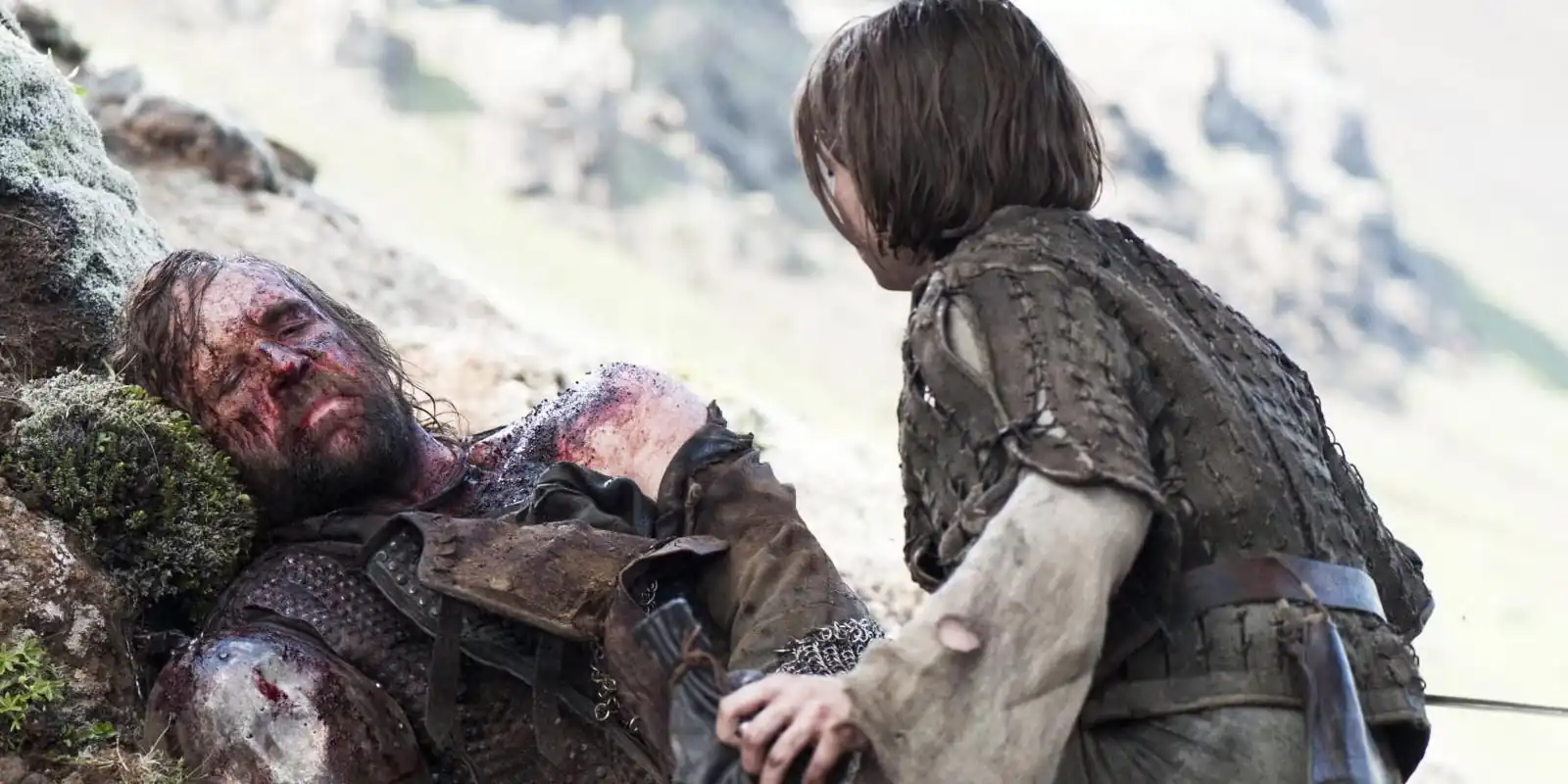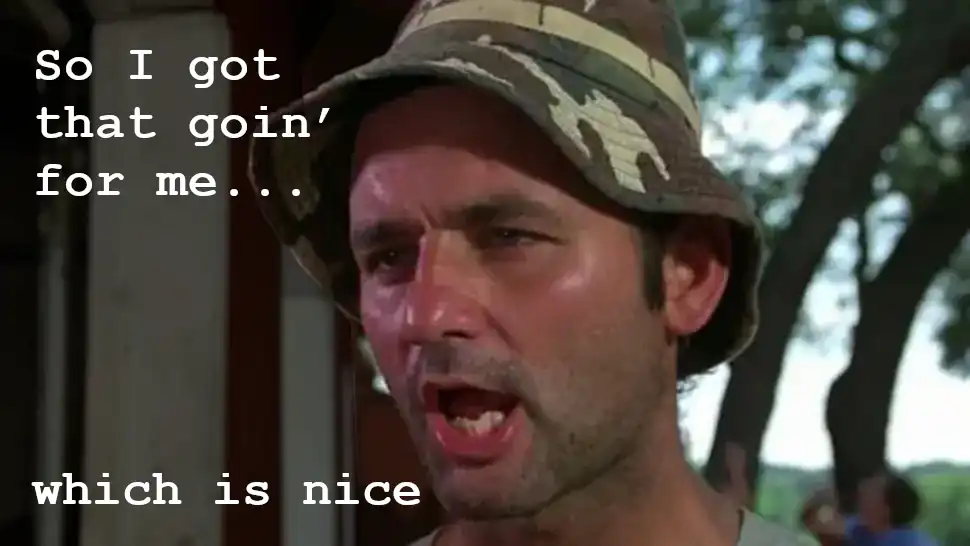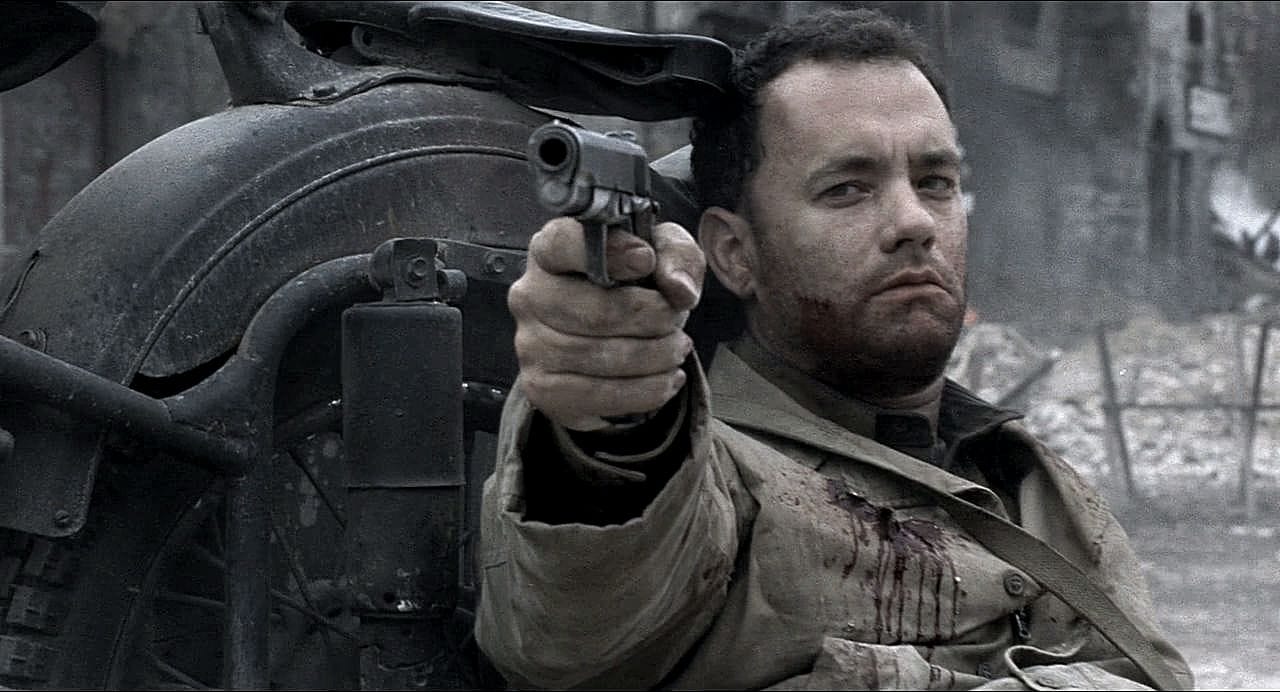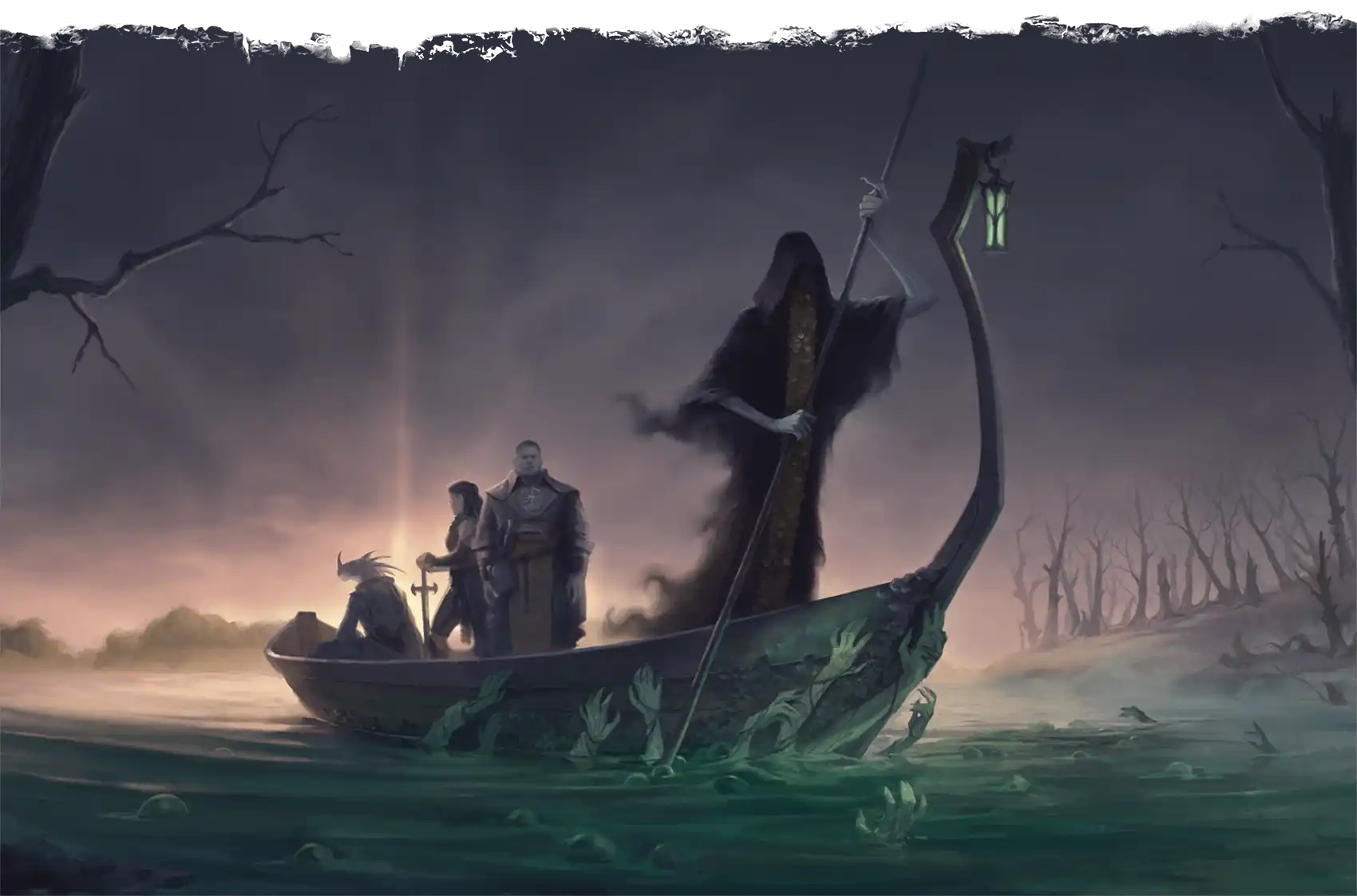Designing Death and Grit in Medieval 5e
When I first started designing Medieval 5e, I knew that hit points couldn’t just mean “meat points.” They had to feel real, grounded in fatigue, pain, and the slow erosion of body and will.
In high fantasy, heroes shrug off wounds that would fell a knight. But in Medieval 5e, every blow needs to mean something. Hit points are abstract, but that abstraction still needs to translate. Players should feel the weight of each hit, the toll of the road, and the edge between survival and collapse.
In a grounded medieval game, death has consequence. There’s no resurrection, no divine undo button. When you die, that’s it. Your story ends, and maybe another begins in its shadow.
It’s important to be clear about the tone: Medieval 5e isn’t epic high fantasy, it’s gritty low-fantasy. It’s not for everyone. But for those looking for a d20 system where wounds matter and life is fragile, then that’s exactly what I’m aiming to deliver.
Here, death isn’t a number.
It’s a story.
Hit Points: Beyond the Body
Hit Points in Medieval 5e aren’t a direct measure of physical injury, they’re an abstract reflection of stress, fatigue, pain, and endurance.
They represent your body’s ability to keep going, your mind’s resolve to push through, and your spirit’s refusal to give up.
Using an abstract mechanic like hit points in a grounded, low-fantasy game meant I needed to think carefully about how that abstraction actually feels in play.
I don’t like handcuffing players. That’s important to me. I don’t believe in mechanics that just punish for the sake of punishment. I’ve never liked “death spirals” where once you start losing, you just keep losing. That’s bad design and it kills agency.
But I did need a way to show that the body takes a beating and that it matters when you’re bleeding, tired, or nearly broken.
Bloodied
In the SRD 5.2, when your current hit points fall to half or fewer, you’re “Bloodied.” That’s it. One line. No follow-up. No meaning beyond a state.
For me, Bloodied is a signal.
Your grip tightens, your breath shortens, your vision narrows.
That matters both for roleplay and mechanically. I wanted players to feel that transition, that shift from confidence to desperation, but without turning it into a penalty or lockout system.
So, I designed a simple mechanic: Certain skills activate or deactivate depending on your state, whether you’re healthy or Bloodied.
It’s not about “you’re weaker now.” It’s about how your playstyle changes under pressure. Some features disappear as fatigue sets in, while others awaken when you’re wounded and cornered. It gives you that cinematic desperation moment without forcing it.
Example: Health-Based Skills
| Skill | Type | Description |
|---|---|---|
| Combat Surge | Action • Stamina | Spend 1 SP to make one additional attack this turn. You can’t use this if Bloodied (50% HP or less). |
| Feral Surge | Action • Stamina | If you are Bloodied (50% HP or less), spend 1 SP to gain a bonus to AC equal to your Proficiency Bonus and Advantage on all attack rolls until the start of your next turn. |
What I like about this system is how it balances with condition.
You don’t lose everything when you’re hurt, you change.
When you’re healthy, you can push harder, fight longer, keep control.
When you’re Bloodied, the calm precision fades, replaced by raw instinct, adrenaline, and rage.
Not all skills work this way, but each class has a few to choose from, giving players a real choice between control and ferocity, discipline and survival.
(Note: Stamina is a meta-currency that fuels these abilities. See the post on Endurance and Stamina for the full breakdown.)
Why It Matters
The Bloodied state isn’t just a health marker, it’s a moment in the story. It’s when the fight turns desperate, when you can see how much it costs to keep standing.
It captures what Medieval 5e is really about, not power fantasies, but endurance.
The line between life and death isn’t just mechanical. It’s emotional, narrative, and human.
That’s the design goal: every swing, every wound, every drop of blood means something. How do you play your character as the tides of battle change.

Zero Hit Points: The Edge of Death
When I first played D&D back in the 1980s, good old Moldvay Basic, it was death at zero hit points. And yeah, I lost a lot of characters.
Modern 5e added death saves, and honestly, I’ve never liked them. I get the intent, add tension, give players a chance, but rolling turn after turn to see if you die?
Booooring.
On the flip side, instant death at zero is just as rough. Trip on a goblin spear, roll a 1, and boom.... gone. That’s not great either.
So I needed a balance, something between the grit of old-school and the forgiveness of modern design.
In Medieval 5e, when you hit 0 hit points, you collapse. You might be bleeding out, delirious with fever, poisoned, or simply too exhausted to move. The reason doesn’t matter, the result does: you are unconscious and dying.
Remember: hit points are abstract. The rules don’t tell you how you’re dying, only that you are. The context, a crushed lung, shattered bone, the black plague, that’s up to the DM. That’s narrative. That’s story.
Mechanically, it’s simple: You will die in a number of turns equal to your Constitution modifier (minimum 1).
Note: With a max modifier of +3, your allies have at most three rounds to save you.
There’s no “push-button” save mechanic. You need help, real help: a healer, a medicine check, or a desperate ally trying to stop the bleeding. Time is ticking.
What brought you to zero defines what happens next, a shattered leg, a punctured lung, a fever that won’t break. How do the players navigate.
Mortal Blows: When the Blade Goes Too Deep
Falling to exactly zero hit points is rare. Most of the time, you overshoot, you take a hit that knocks you below zero.
That’s where Mortal Blows come in.
I wanted a way to represent severity, how bad the damage really was.
Did the blade just nick your ribs, or did it go straight through your chest?
So here’s how it works:
When an attack reduces you below 0 Hit Points, you suffer a Mortal Blow.
- If you still have any Stamina, you may attempt to survive.
- If you have none, the Mortal Blow kills you outright.
To cling to life, expend all remaining Stamina and make a Constitution saving throw. Add your expended Stamina Points as a bonus to the roll.
This is it, your one chance to survive.
The DC depends on the severity of the injury:
DC = 10 + the number of negative Hit Points.
It’s simple, but it scales beautifully.
- Got poked by a dagger for just enough to drop you to -2 HP? DC 12, you might pull through.
- Got smashed in the chest with a warhammer and dropped to -8 HP? DC 18, that’s a real “see the light” moment.
If you succeed, you cling to life, barely. You’re at 0 HP, unconscious, and dying. You also suffer 1 level of Exhaustion. Remember, you’ll die in a number of turns equal to your Constitution modifier (min 1), unless someone stabilizes or treats you in time.
Example: Lukas’s Mortal Blow
Lukas, a ranger with a Constitution modifier of +2, takes a battleaxe to the chest, a devastating Mortal Blow that drops him to –7 Hit Points.
He still has 1 Stamina Point remaining and chooses to fight for his life.
The DC for his Constitution saving throw is 17 (10 + the negative Hit Points), and he adds +1 to the roll from his expended Stamina.
If he succeeds, Lukas clings to life at 0 Hit Points, unconscious, and dying.
He suffers 1 level of Exhaustion, has no remaining Stamina, and will die in two turns unless stabilized or healed.
Yeah, it’s bad, but you’re not dead.
I mean you did receive total consciousness on your death bed.

A Mortal Blow leaves its mark, the kind of scar and reminds you that you’re mortal.
In Medieval 5e, you don’t bounce back, no mulligans, no "do-overs."
There are no resurrection, no magic rewinds.
If you live, it’s because your companions carried you to safety.
If you die, it’s because the dice and fate demanded it.
That’s the kind of tension I wanted.
Not death for death’s sake, but a reason to fight harder, act smarter, and care more about the people standing next to you.
The Last Stand: A Hero’s Final Act
But there’s one final choice.
If you suffer a Mortal Blow and still have Stamina remaining, rather than attempting to survive (CON save), you may dig deep and make your Last Stand!
You burn every remaining Stamina Point and declare a single, cinematic act...
One last moment of defiance, courage, or sacrifice.
There’s no roll. Whatever you declare, happens.

Remember the final scene in Saving Private Ryan?
Captain Miller, bleeding out, firing his Colt .45 at the approaching Panzer, knowing he’s done for, but buying his men a few more seconds.
That’s it.
That’s Last Stand.
You might drive your blade through the heart of the enemy commander.
You might hold the bridge long enough for your companions to escape.
You might throw yourself into the abyss, dragging the beast with you.
And then… you die.
There is no return.
No scroll. No divine grace. No “just kidding” resurrection.
But your story doesn’t end there.
Songs will be written.
Tales will be told.
Your name will echo in the halls of those who remember, whispered in taverns, carved into stone, or prayed over by those you saved.
Example: Lukas's Last Stand
Lukas the ranger and his companions have been holding back a band of raiders attacking a small village. They’ve fought long enough for most of the villagers to escape, but the tide of battle is turning. The party is bloodied, exhausted, and barely holding the line.
Then it happens.
A raider’s battleaxe crashes into Lukas’s chest, dropping him to –7 Hit Points. He has only 1 Stamina Point left. Gasping for air, he looks toward his friends and the terrified children still fleeing toward the woods. They need more time.
Lukas chooses his Last Stand.
With every ounce of strength left in him, he rises. Grabbing a fallen halberd, he charges into the horde, swinging in wide, desperate arcs. Raiders stumble back as the blade bites into flesh and armor. His scream echoes across the field, raw, defiant, unforgettable.
For a moment, even the raiders hesitate, unnerved by his fury. Lukas has bought his companions precious moments to retreat and shepherd the last of the villagers to safety.
He glances back one final time, meeting their eyes. A nod. A farewell. A promise kept.
Then a sword pierces his chest. He drops to his knees, blood in his mouth, the sounds of battle fading to silence.
The deed is done. His comrades live. The villagers are safe.
And Lukas’s name will be remembered.
Your death leaves ripples through the world:
- A companion may swear vengeance in your name.
- A brother or lover may take up your sword.
- A rival might rise, shaped by your loss or by your legend.
In Medieval 5e, how you die can matter more than how you lived.
Because sometimes, the way you fall is what makes the story worth telling.
Design Reflection
These rules aren’t about punishing players, they’re about consequence. Death is a consequence of action, choice, and circumstances.
In a world of hard steel and human frailty, victory means something only because death is possible.
Every scar tells a story, and every death reshapes the world.
Whether your character lives or dies, Medieval 5e ensures one thing:
Your story will be remembered.


Member discussion: